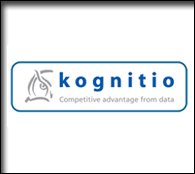Stating the Obvious: Gaming the Cycle
by Eric Norlin on Oct.07, 2009, under Uncategorized
Yesterday, I began to blog a bit about IT cycles. I wanted to expound on that a bit more today.
To recap: I believe we are at the early stages of a new cycle in IT innovation (specifically, enterprise IT). The new cycle can be called a “productivity boom,” and it is being amplified by what is now clearly a jobless recovery (that I’d argue will stay that way). This “meta-cycle” has two main components - the movement to the “cloud,” and the leveraging of the human aspect of the business process. Both aspects of this meta-cycle reinforce the larger “arc” of productivity. Defrag addresses the enabling infrastructure of the cloud, and focuses squarely on the leveraging of the human aspect in business. There are three core pieces to leveraging the human aspect in the business process: the customer facing segment (”social media”), the internally facing segment (collaboration or “enterprise 2.0″) and the partner facing segment (we don’t have a buzzword for this yet, other than the catch-all “cloud” stuff).
That said, let me unpack things a bit more.
Cycles are funny things. If you look at a enough of them, you can figure out what the “tells” or clues that give away their ending and beginning are. For instance…
Oracle buys Sun.
That is as about as clear a signal as you’ll ever get that an IT cycle is ending. And when one IT cycle is ending, you can be nearly certain that a new one is beginning (even if you can’t fully see it yet).
What makes me certain that we’re entering a new cycle for IT are big picture trends combined with small anecdotes that make bells ring in my head. For example, I have a friend in a large enterprise who always seems to be on the cutting edge of whatever IT cycle we’re in (he just gravitates toward it naturally, and *always* gets tasked with “spearheading a project”). It happened last time around during the “automation” cycle, and like clockwork, it’s happening this time around, as he’s been tasked with “figuring out that ’social’ stuff” — where “social” means everything both internally and externally facing.
When I combine that anecdote with what are clear trends in “social media” and “enterprise 2.0″ (quoting because i can’t stand the buzzwords), the cycle is pretty damn obvious.
The next steps in the cycle can be better understood by taking a look at an overlay I’ve created. The overlay uses Geoffrey Moore’s famous “crossing the chasm” graph, and then overlays Gartner’s also famous “hype cycle” graph. (Sidenote: both of these graphs prove that you can make a boatload of money if you can come up with a really descriptive visualization of a trend.)
Uploaded with plasq’s Skitch!
Combining the two graphs (whether they’re meant to be combined or not) is actually pretty informative.
I’d argue that our current cycle is exiting the “technology enthusiast” phase and heading into the “visionary” adoption phase. We can see this via large-scale deployments that are occurring in both the social media and enterprise 2.0 world. That means (if my overlay holds even a kernel of truth) that we’re simultaneously nearing Gartner’s “peak of inflated expectations,” and heading toward the eventual trough of disillusionment and chasm.
Whether or not we’ve actually hit the “peak” yet is something that I’m personally debating. In cycles, there tends to be a moment in time when an event (an acquisition, or a magazine cover, or something) can be looked back on and pointed to as “that’s when the hype peaked.” I haven’t seen that yet.
What is clear is that we’re most assuredly heading up that left side of the curve towards the peak. And once reached, there’s only one clear direction - into the trough. This is why I’ve made some comments on Twitter as of late that I think we’re heading for the trough. Once the peak is reached, you can roughly anticipate that the trough will occur 12-18 months later.
So, you know it’s coming, does that in *any* way lessen the impact of the cycle? Of course not. The rise in the hype cycle that corresponds to the approaching of the chasm speaks as much to the development of the technology and how it correlates to what is necessary for mainstream adoption as anything else. All of which brings me to my next graph…
This is Clay Christenson’s “Innnovator’s Dilemma” graph.
Uploaded with plasq’s Skitch!
I didn’t overlay this on to the other two graphs, as it was just a bit too confusing. However, my suspicion is that the point where the “disruptive technology” line crosses the “medium quality use” line correlates to the fall into the trough of disillusionment on the gartner curve, and the chasm on the moore graph.
When you add these three things up, you can clearly see a point in the IT cycle where expectations exceed the capabilities of technology (ie, “quality”) and the accompanying “disillusionment” represents the “chasm” that must be crossed for mainstream adoption to occur. All of which is a way of saying that we’re *early* in this current cycle.
The longevity and true power of the current IT cycle comes on the other side of the chasm, on the other side of the trough, on the other side of making the jump from medium quality use to high quality use. And the sheer dollars that are going to drive this cycle explain why I can be less than optimistic about the overall macro-trends in our economy, while maintaining an almost excessive optimism about the growth that we’ll see in this sector of the technology world.
Therefore, the next twenty-four months are pretty critical. They’re critical for the vendors in the space, as they try to move their products/services across that chasm. They’re critical for the community at large, as we collectively define, scope out and chart the direction of the “solution set.” And they’re mission critical for the IT professional, as they need to get a really good grasp of the strategic landscape (and land mines), lest they find their careers falling rather precipitously into said chasm.
The quickest sure-fire path to chasm failure is to not see the totality of the cycle at hand. If you focus too narrowly on only one aspect, you’ll improperly scope the design of your goals, not account for the other 2/3rds of the equation, and find yourself in the purgatory that is the chasm. That’s why I’m particularly heartened by the formation of groups like The Dachis Group and The Altimeter Group — consultancies (for lack of a better word) formed specifically to see the totality of the problem (and another sign of where we are in the cycle).
In closing, let me ground this around Defrag just a bit.
At first glance, the Defrag agenda can look at bit happenstance. After all, we’re talking about everything from “productivity cycles” with Andy Kessler to The Cluetrain Manifesto (with an author reunion). Believe me, the agenda is not thrown together, nor is it happenstance.
The defrag agenda is built very specifically to spur on interaction and conversation around three key areas:
1) The customer-facing side of this “meta-cycle” — as seen in sessions around social media, conversations, the open web and the real-time stream.
2) The internally-facing side of the cycle — as seen in sessions focused on collaboration, messaging metaphors, discovery and intelligence and data management.
3) The cloud/partner-facing side of the cycle — as seen in sessions on enabling infrastructure and identity.
If you come to defrag, I cannot promise that you’ll hear about the magic solution that can be presented in a case study that will solve all of your problems. But I can promise that, collectively, we’ll all begin to interact around the strategic hurdles that must be overcome as we head over the peak of inflated expectations and toward the chasm.
Not preparing yourself for the coming, know-able, and “game-able” steps in this IT cycle is like walking blind-folded into a field of land-mines.
Don’t do it alone. Join us at Defrag.









